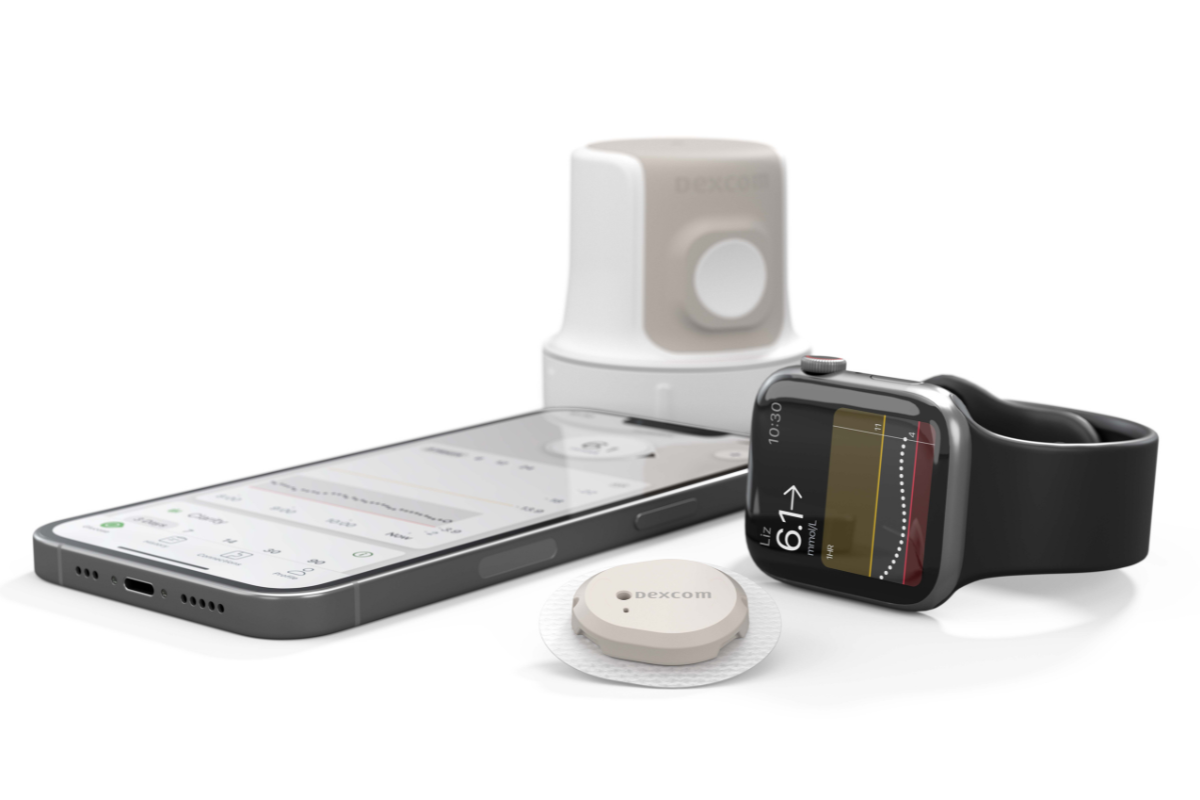
Today, Dexcom announced that the U.S. Food and Drug Administration (FDA) cleared the Dexcom G7® Continuous Glucose Monitor (CGM) system for ages 2+. People with diabetes will now have a smaller and more accurate CGM to help manage their blood-sugar levels.
“Breakthrough T1D is thrilled that the Dexcom G7 was cleared by the FDA,” says Breakthrough T1D Director of Research, Jonathan Rosen, Ph.D. “Rigorous research has shown many times over that CGM devices improve glucose control and other health outcomes. The Dexcom G7 features many notable improvements that are aligned with Breakthrough T1D’s goal of people with type 1 diabetes having access to effective, convenient therapies.”
G7 Enhancements
Smaller Profile, Easier Insertion
The G7 is 60% smaller than the G6 and has a simpler, one-step insertion process. The G6 has a transmitter that is reused for several weeks and inserted into each new sensor; the G7 is one disposable unit.
Shorter Warmup Time
A warmup period is required after the insertion of the sensor. During that time, the user does not have access to their blood-sugar levels. The warmup for the G6 is 2 hours, but only 30 minutes for the G7. That’s an extra 90 minutes per 10-day use sensor that the user has access to data with which to make decisions.
More Accurate
The G7 is more accurate than the G6. Dexcom published data from their pivotal trial demonstrating the safety and efficacy of the device. Of note is the G7’s Mean Absolute Relative Difference (MARD), which is a key metric used to evaluate CGM accuracy. MARD calculates the average difference between the glucose reading on the CGM with a blood-glucose measurement measured via a blood sample. The MARD for the G7 is 8.2% for sensors placed on the upper arm. That means the reading from the Dexcom is, on average, 8.2% different than the reading on the glucometer. This is an improvement over the G6’s 9% MARD for sensors on the abdomen (the G6 is not approved for use on the upper arm).
Breakthrough T1D has played a pivotal role in novel CGM development, as well as access and adoption, including supporting a clinical trial that conclusively demonstrated that CGM use improved health outcomes for people with diabetes. Dexcom G7 is one of several commercially available CGM systems now, which gives people with T1D the freedom to choose the tools and systems that are right for them.
Breakthrough T1D will continue to monitor the field and push for meaningful technological advancements, and we won’t ever stop fighting for affordability, choice, and coverage on our path to a world without T1D.
Breakthrough T1D and Dexcom have a history of mutual support. Breakthrough T1D awarded a grant to Dexcom in 2015 and Dexcom provides Breakthrough T1D-funded studies with supplies. Breakthrough T1D did not fund research into the development of the G7.
Per Dexcom, they are working closely with its insulin pump partners to integrate Dexcom G7 into current and future automated insulin delivery systems as quickly as possible.
Dexcom anticipates the G7 will be available in early 2023.